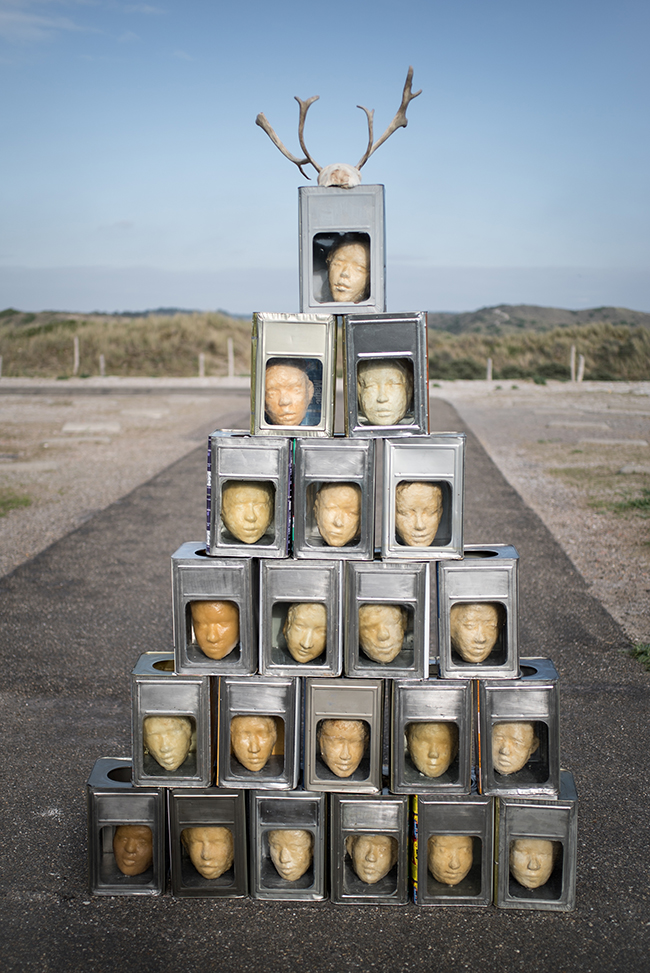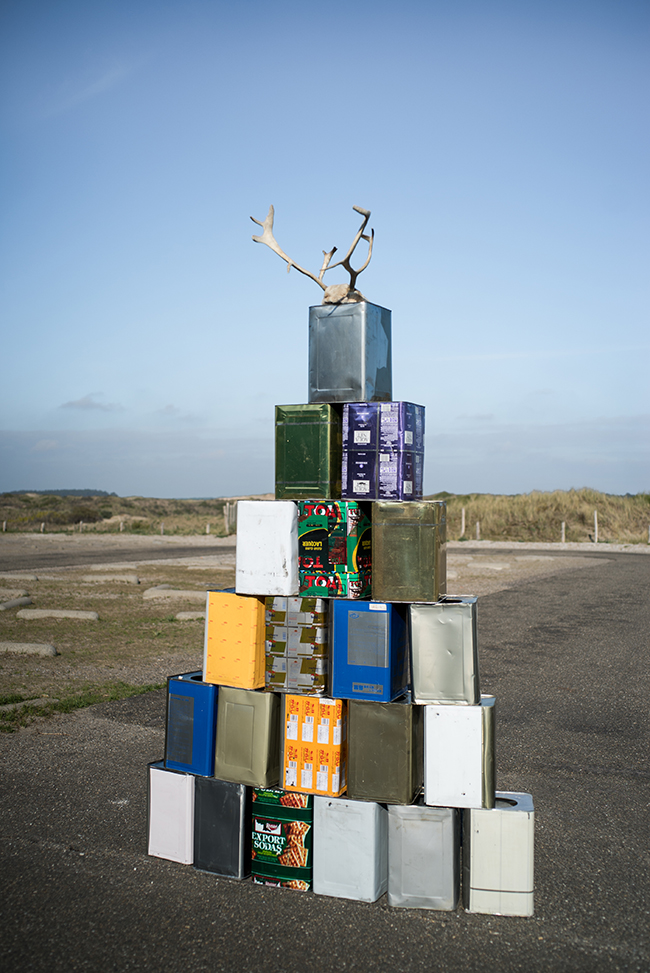Dutch sculptor Caroline Kampfraath whose works grace international exhibitions, is deeply rooted in the belief that each piece demands its own unique material. This self-imposed challenge, according to the artist, adds a layer of complexity to her creations, pushing the boundaries of conventional sculptural expression.

Caroline’s visual language is characterized by a surreal and sometimes puzzling atmosphere, where symbols like engorged veins, deceased canines, or kidney-shaped dishes take center stage. These seemingly disparate elements weave together to form thematic pieces and installations that defy immediate interpretation. The observer is left to navigate the intricate tapestry of Caroline’s imagination, where meaning is often veiled and requires a more profound engagement.
The choice of materials in Caroline’s oeuvre is as eclectic as the symbols she employs. From natural resin to clay, flax to artificial resin, wool to lead, plaster to glass, and bronze to stone — her palette encompasses a diverse array. The seemingly incompatible nature of these materials is what captivates the viewer, as their contrasting properties create a visual tension that resonates with the overall ambiance of her work.
One of Caroline Kampfraath’s noteworthy sculptures is aptly titled “A Day in the Woods.” This 220x160x45cm piece, composed of wax, metal, bone, and skin, stands as a testament to the artist’s ability to fuse unconventional elements into a harmonious whole. The sculpture incorporates used cans sourced from different corners of the globe, originally intended for herbs, tea, and various goods. The cans, reminiscent of children displaced from their homelands due to reasons such as war and poverty, become integral to the narrative.

In her accompanying statement, Caroline draws attention to the multifaceted aspects of displacement. The cans symbolize the children’s departure from their native lands, leaving behind not only their cultural heritage but also the landscape, scents, and atmospheres that shaped their upbringing. The sculpture unfolds as a visual narrative, echoing the untold stories carried within the hearts of those who embark on the challenging journey of adapting to a new life.
The Altiba9 Gallery in Barcelona currently hosts “A Day in the Woods,” offering viewers a chance to immerse themselves in Caroline Kampfraath’s unique artistic vision. The exhibition, running until January 14, 2023, invites contemplation on the complex interplay of identity, displacement, and adaptation in the face of life-altering circumstances.
Caroline’s titles, though providing a hint to the underlying meaning, do not serve as a roadmap for immediate comprehension. Instead, they act as subtle guides, prompting the observer to delve deeper into the layers of symbolism and metaphor that define her work. The artist’s deliberate choice to keep her creations open to interpretation fosters an intimate and personal connection between the audience and the artwork.

